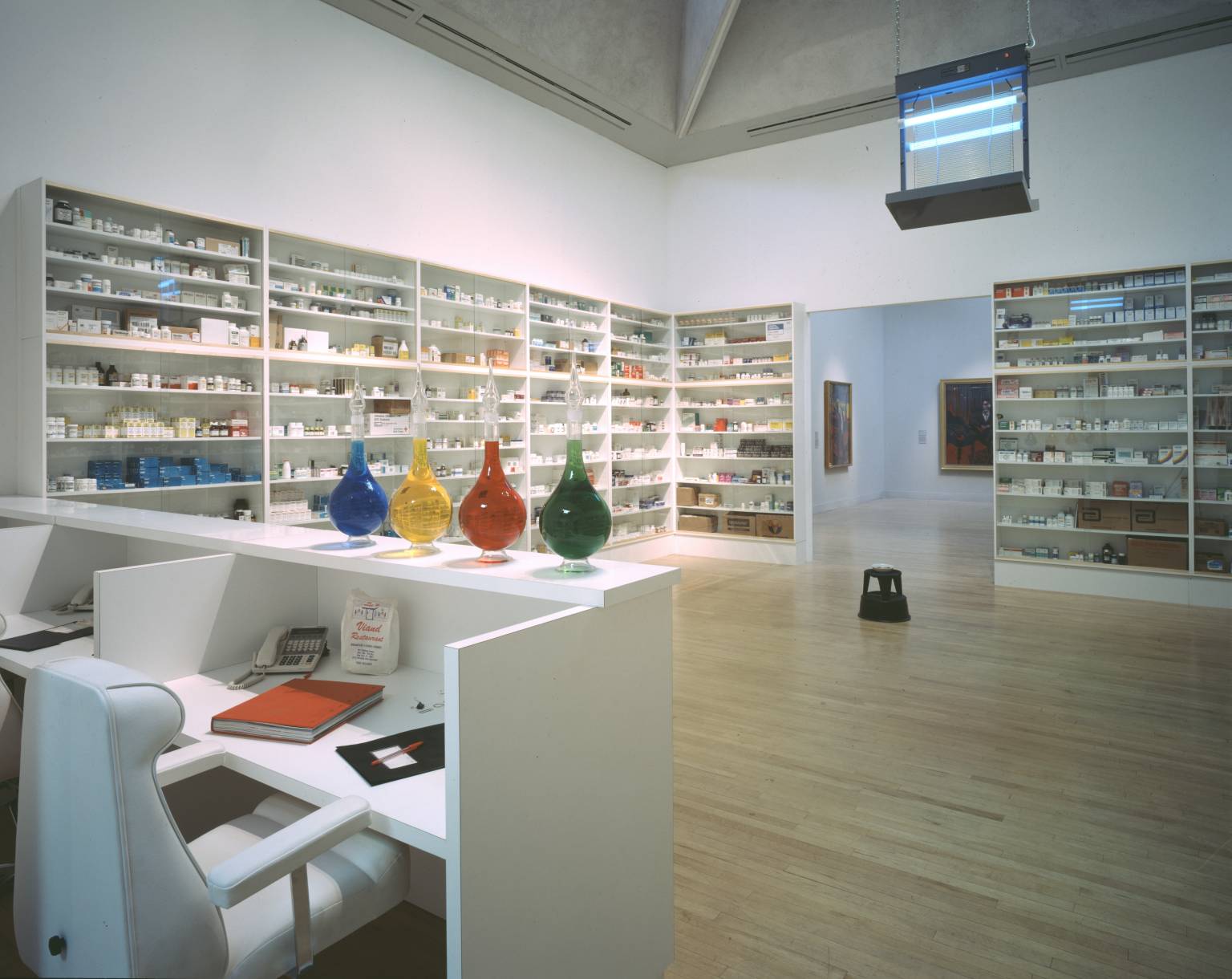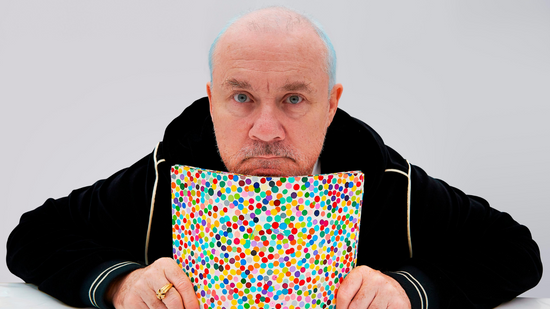
“People are afraid of change, so you create a kind of belief for them through repetition. It's like breathing. I have always been attracted to series and pairs. A single thing is quite a frightening object.” — Damien Hirst Since emerging onto the international art scene in the late 1980s, Damien Hirst created installations, sculptures, paintings and drawings that examine the complex relationships between art and beauty, religion, science and life and death. From multicolored stained paintings to animal specimens preserved in vats of formaldehyde, her work challenges contemporary belief systems, tracing the uncertainties that underlie the anatomy of the human experience. Discover seven facts about Damien Hirst.
1.Loves to shock viewers and push boundaries
Over the years, the work of Damien Hirst has drawn outrage but also admiration from the public. With heavy themes, involving death and decay, the British artist managed to reach fame. Shocking and visually stunning, “The Physical Impossibility of Death in the Mind of Someone Living”, which features a shark preserved in a vat of formaldehyde, was the piece that cemented his career as an artist who was not afraid to push boundaries.

2.Internship at a Mortuary
While a student at Goldsmiths, University of London, Damien Hirst did an internship at a morgue. This stage influenced much of his later works, such as the famous work “The Physical Impossibility of Death in the Mind of Someone Living”. In fact, death has been central to his work from the beginning, having stated that he “deals with death in art, not with life”. Hirst's frequent depiction of mortality has many critics convinced that his passion is in fact a visceral response to a deeply rooted fear of death.
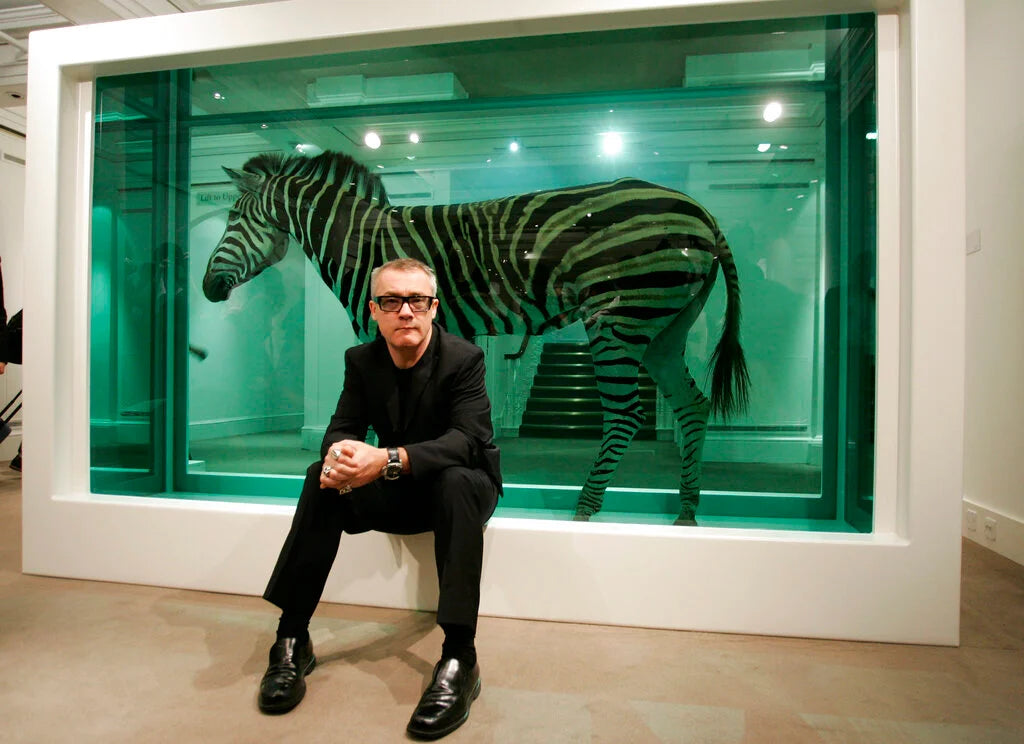
3.Damien Hirst created the most expensive work of art by a living artist
Hirst claimed in an interview that ``For the Love of God'' cost him a whopping £8 million to finance, but the final figure came to an even greater sum of £15 million. After 18 months in the making, the bejeweled skull was finally displayed at White Cube and garnered international media attention due to its unbelievable price. To this day, ``For the Love of God'' is considered the most expensive work of contemporary art ever made. It's not surprising that For the Love of God fetched such a mind-boggling price tag, as it's made up of two of the most precious and expensive materials on the market: platinum and crystalline diamonds. The entire skull is studded with diamonds, weighing in at a tremendous 1,106.18 carats in total. The huge pink diamond in front of the skull alone weighs 52.4 carats. If this monumental project proves anything, it's that diamonds really are a man's best friend. Damien Hirst.
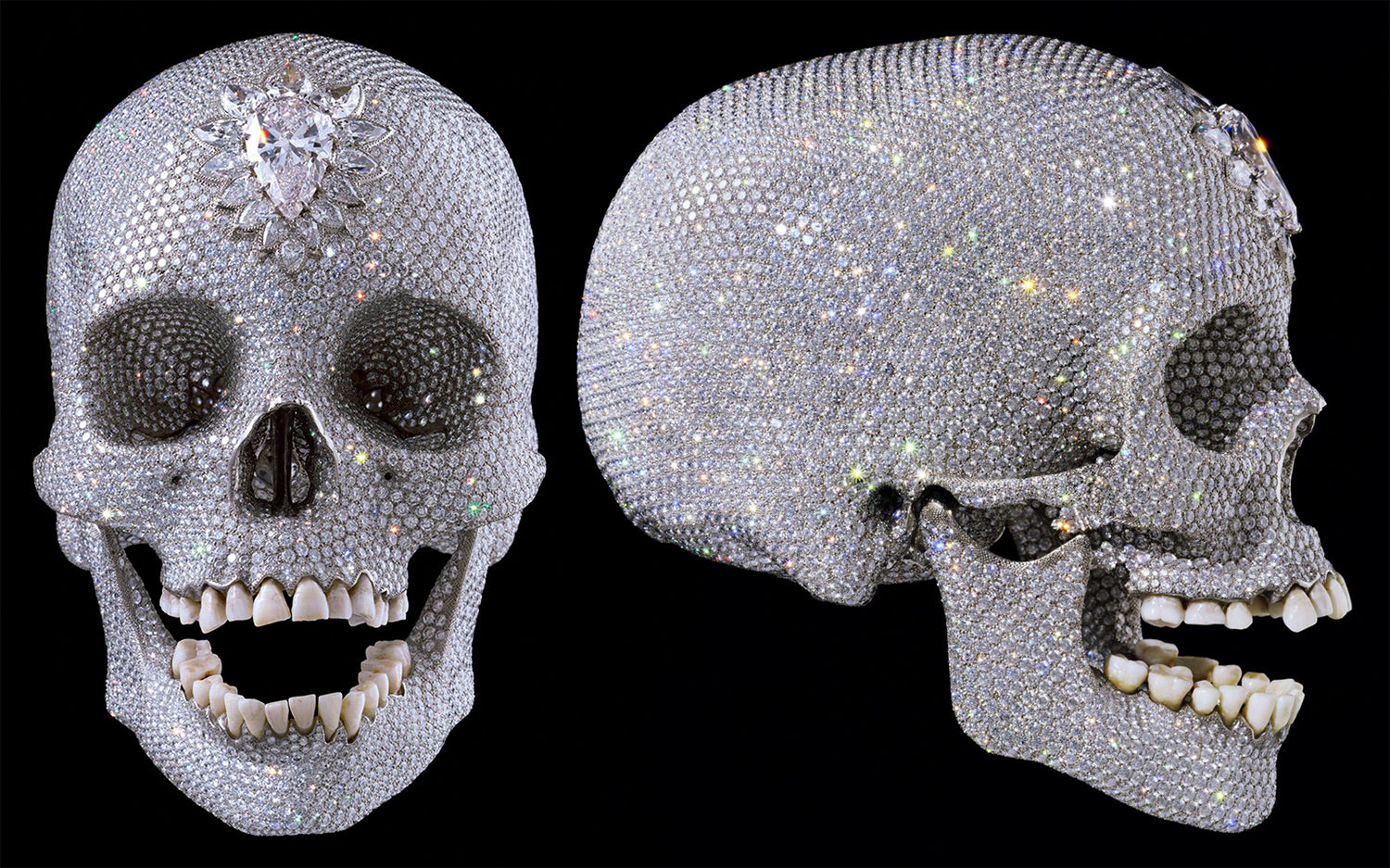
4. The Cherry Blossom series comes from a memory with your mother
Damien Hirst admitted in an interview that his mother claimed that animals in formaldehyde were horrible, and asked him if he couldn't paint flowers. At the age of 55, the British painter finally pleased his mother with the Cherry Blossom series. But they are more than just flower paintings. Cherry Blossom are lush and vivid, but also excessive and messy. As Hirst stated, some people think cherry blossoms are about life and others think they are about death. “They bring together the past, present and future, everything we love and everything we hate.” The subject arises in part from a memory of Hirst's mother painting a cherry tree in bloom when Damien Hirst was three or four years old. It's also a follow-up to the all-abstract Veil Paintings that showed in Los Angeles in 2018. "I tried to create a sense of depth and ended up seeing gardens in the shimmering strokes of paint."
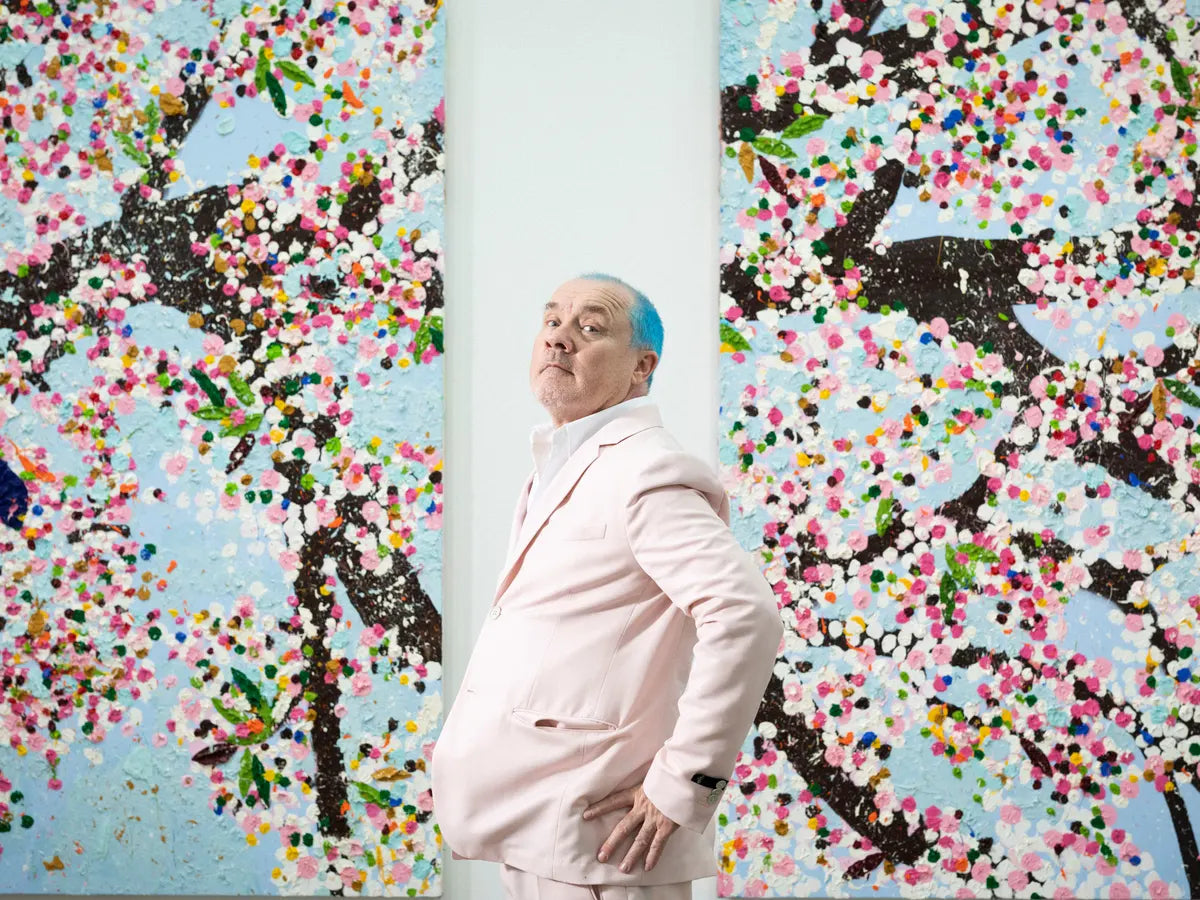
5. Has already been involved in several lawsuits
Since emerging on the British art scene in the late 1980s, Hirst has been a polarizing figure, with some critics hailing him as a genius and others dismissive of his work. Over the years, the artist has also been the subject of several high-profile lawsuits, including several cases of legal threats surrounding copyright infringement by other artists and companies. One of the most famous cases was in 2000 when Hirst agreed to pay an undisclosed sum to the charity 'Humbrol' to settle a copyright dispute sparked by his 20-foot bronze sculpture 'Hymn' which was rumored to be a direct copy of Young Scientist Anatomy Set.
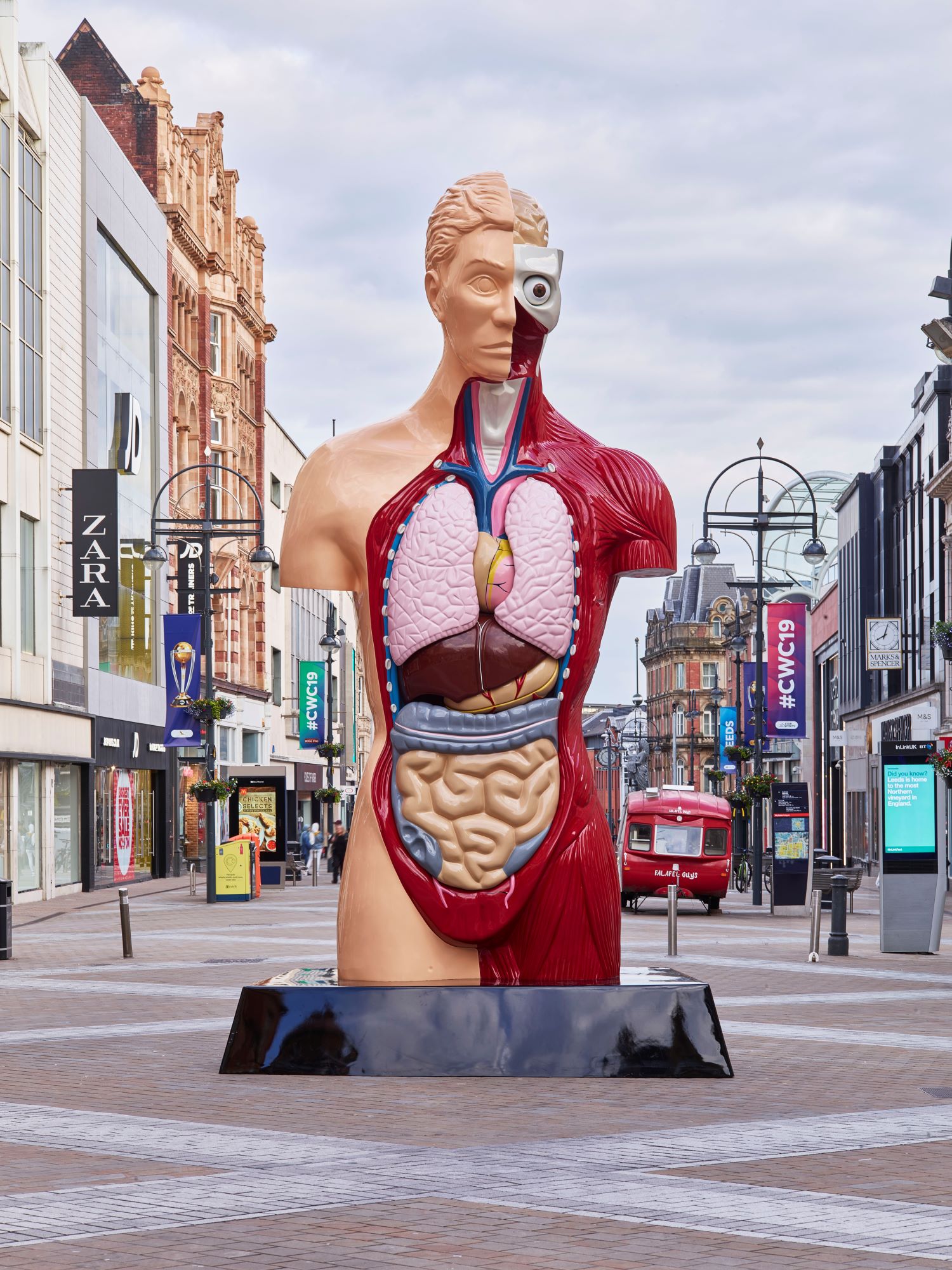
6.Damien Hirst not just an artist but a true empire
Ever since an Irish accountant named Frank Dunphy, the name Damien Hirst it is not even an artist but a real empire, with around 100 employees. Despite the controversies, Damien Hirst is considered one of the most profitable artists in the world of contemporary art. Last year, Hirst spoke to the Guardian about his relationship with his manager and his approach to business. He recalled: "I always remember something Frank said to me early on, right after my play Hymn sold for a million to Saatchi. He said, 'You can't worry about the value, Damien. A work of art. art is only worth what the next person decides to pay for it. [Frank] was the first and only person I knew who understands money on that level. And who is honest."
7. Irony is a constant in the work of Damien Hirst
The artist also has a fascination with what keeps us alive – in particular, medication. In 1992 he created the 'Pharmacy’, a room-sized installation filled with medicine, arranged in the order of the human body, with medicine for the head on the top shelf, and so on. In conjunction with the installation shown at the Tate Modern in 1998, Hirst opened a restaurant called Pharmacy in Notting Hill, where staff wore surgical gowns and there were aspirin pill-style bar stools. It was later forced to change the name after the Royal Pharmaceutical Society of Britain took legal action, claiming it was against section 78 of the Medicines Act 1968. Damien Hirst briefly renamed the Army Chap (an anagram of Pharmacy), before settling on the name Pharmacy Restaurant.
